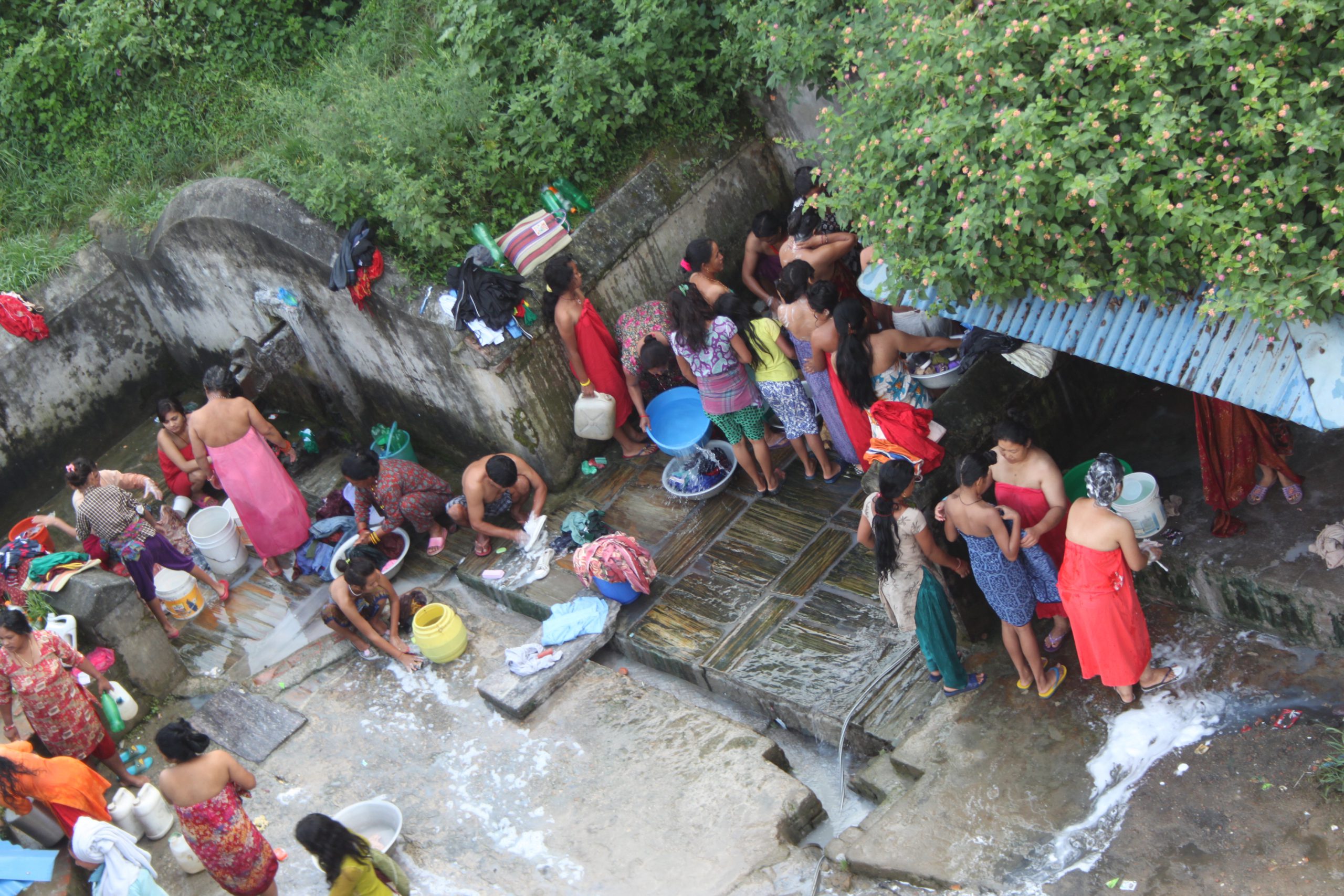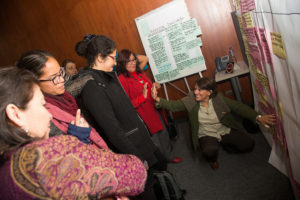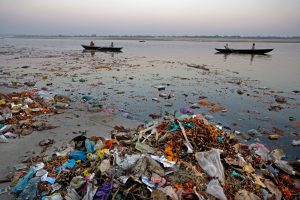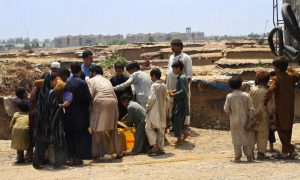Before dawn, women were already queuing up to wash in a public water spout in Bhaisepati, a southern suburb of the Kathmandu valley. They were preparing for Teej, a Hindu festival when women fast and pray for the health and long life of their husbands.
“We are fortunate to have this water spout, which makes our lives easier in this water scarce city,” said Saraswoti Adhikari, as she prepared to bathe. As the sun rose, more and more women took advantage of the free water — a rare event now in the city.
The stone tap is the only source of drinking water for many people in the area. It is always a busy spot where others come from far away to collect water. Traditional spouts have provided water to people in the valley for centuries, but in most neighbourhoods they have dried up over the past few decades due to rapid urbanization.
Read also: Kathmandu’s traditional water spouts run dry
Nepal’s capital is running a severe water deficit, with demand more than triple the supply during the dry season.
[iframe src=”https://magic.piktochart.com/embed/8458870-kathmandu” width=”100%” height=”350px”]
The country has abundant water resources, with one of the highest per capita water availability in the world at about 7,600 cubic metres per year. But the capital has struggled with a growing water crisis for decades. Kathmandu’s population has expanded from 200,000 in the 1950s to four million today, but the city has not built any new infrastructure over the past two decades to meet its growing water needs.
According to the Nepalese government’s Central Bureau of Statistics, one in every five Kathmandu households has no access to a domestic water source and two-thirds of its urban households live with an inadequate water supply.
“Households get water once every four days to ten days for a minimum of one hour. This is all we can do with the facilities we have at present,” said Milan Kumar Shakya, spokesperson at the Kathmandu Upatyaka Khanepani Limited (KUKL) – the authority responsible for providing water to the valley dwellers.
Existing pipes are leaky – about 35% of the city’s water is lost through pipes. Some households that are connected do not get any water at all. “Many house owners ask us to install pipes in a hope that new projects under construction will serve them in the future,” Shakya added.
Melamchi’s sad story
Kathmanduites are hoping the completion of the Melamchi Water Project will end their woes. The multimillion-dollar project was designed to divert water from Melamchi river in Sindhupalchowk district near the border with China.
Since the massive project was first conceived in the 1990s, Nepal has witnessed more than a dozen different governments and transitioned from a monarchy to a federal republic.
The project was originally supposed to start pumping water to Kathmandu by 2007. Authorities now claim it will be ready by the middle of next year, but with only half of the 27 kilometres of tunnels completed, this remains a pipe dream.
“Huge corruption, the high expectations of the locals and inefficient contractors are all mixed up in the country’s largest ever infrastructure project and it’s still uncertain whether the project will be completed,” said Ganesh Shah, former environment minister and water activist.
Even if the project is completed, it will not provide enough water to satisfy Kathmandu’s growing demand, said Shakya of KUKL. On top of this, the government does not have the facilities to treat the extra 170 million litres of water that the project will bring every day.
“We only have the capacity to treat about 85 million litres of water so the remaining water will be used to recharge the river system in Kathmandu,” admitted Ghanashyam Bhattarai, executive director of the Melamchi project.
The devastating earthquakes that hit Nepal in April and May this year damaged the project’s pipes and tunnels and brought construction to a halt. Likewise, authorities are still struggling to repair existing water systems destroyed in the quake, leaving many more people with no access to water.
Water: a booming business
As the Kathmandu’s water crisis deepens, most people are forced to rely on private water tankers.
Kancha Maharjan has been selling water form a tanker in Kathmandu for the last 20 years and the demand continues to grow, he says.
About 700 tankers operate in the city every day, with no government authority to regulate water quality or prices, which are fixed on an ad hoc basis. “We pay around US$5 for a 12,000 litre tanker and sell at $20 to $25,” added Maharjan.
Groundwater depletion
People who have the resources dig wells to extract groundwater. About 50% of water demand in Kathmandu is met through groundwater extraction. Around 58.6 million litres per day is extracted – almost double the sustainable level, say researchers.
“The biggest problem is groundwater recharge is decreasing and it might result in lowering of the groundwater table,” said Surendra Shrestha, a government expert on groundwater.
The government’s groundwater body has failed to tackle the unregulated extraction of groundwater by hotels, businesses and industry.
“We know the extraction is rampant, but we are yet to carry out detailed research, since we lack adequate resources,” said Jagat Prasad Joshi, executive director of the groundwater development board.
According to Joshi, the government plans to upgrade the development board to a groundwater authority that will have more power to regulate extraction and carry out research. “Once the next parliament starts in a few months’ time, the bill to set up the authority will be passed and this will be a milestone in groundwater regulation,” Joshi added.




![Dal Lake, Half of Kashmi's wetlands have disappeared in the last century [mage by Athar Parvaiz]](https://dialogue.earth/content/uploads/2015/10/10-300x225.jpg)





